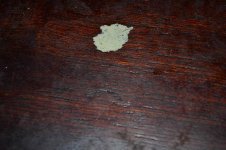Fortuitous Timing
Fortuitous Timing


These little mafas flew in and attacked my plants last night. The plants killed them dead as fuck. I have two rooms that will do this every time. One is a hybrid, mostly organic with CaNO3 as the N fertigated and this one is pure organic.
Both rooms have brix right around 11 and the line is really, really fuzzy on the optical refractometer. Both rooms have sap pH of 6.4 plus or minus a 0.1. The organic room actually has higher EC in the soil.
Coincidence...maybe. I do not have enough data to do any kind of meaningful statistical analysis.
The thing about organic is how do you flush it? It gets fed as long as the microbiology remains alive and minerals remain attached to cec sites or complexed by organic acids. We should look to the tobacco industry...I bet they have some research on how to make stuff burn properly.
Anyways...nothing but anecdotal evidence. But it still makes me every time I see it happen.
every time I see it happen.
edit...sorry about the HPS lighting.
Fortuitous Timing


These little mafas flew in and attacked my plants last night. The plants killed them dead as fuck. I have two rooms that will do this every time. One is a hybrid, mostly organic with CaNO3 as the N fertigated and this one is pure organic.
Both rooms have brix right around 11 and the line is really, really fuzzy on the optical refractometer. Both rooms have sap pH of 6.4 plus or minus a 0.1. The organic room actually has higher EC in the soil.
Coincidence...maybe. I do not have enough data to do any kind of meaningful statistical analysis.
The thing about organic is how do you flush it? It gets fed as long as the microbiology remains alive and minerals remain attached to cec sites or complexed by organic acids. We should look to the tobacco industry...I bet they have some research on how to make stuff burn properly.
Anyways...nothing but anecdotal evidence. But it still makes me
 every time I see it happen.
every time I see it happen.edit...sorry about the HPS lighting.



